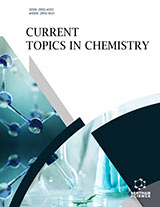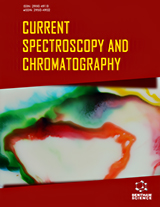Abstract
Hypoxia is a common feature observed in solid tumours. It is a target of interest in oncology as it has been found to be closely associated with tumour progression, metastasis and aggressiveness and confers resistance to a variety of chemotherapeutic agents as well as radiotherapy. AQ4N, also known as banoxatrone or 1,4-bis-[2-(dimethylamino-Noxide) ethyl]amino-5,8-dihydroxyanthracene-9,10-dione is a very promising bioreductive prodrug. This paper, describes an application of MALDI-MSI combined with ion mobility separation and an "on-tissue" bottom up proteomic strategy to obtain proteomic data from AQ4N dosed tumour xenograft tissue sections. These data are then correlated with the drug distribution determined also using MALDI-ion mobility separation-mass spectrometry imaging (MALDI-IMS-MSI). PCA-DA and OPLS-DA have been used to compare treated and untreated xenografts and of note is the marked increase in expression of Histone H3.
Keywords: Hypoxia, AQ4N, MALDI, ion mobility, mass spectrometry imaging
Current Analytical Chemistry
Title:Targeting of Hypoxia in AQ4N-treated Tumour Xenografts by MALDIIon Mobility Separation-Mass Spectrometry Imaging
Volume: 9 Issue: 2
Author(s): Marie-Claude Djidja, Simona Francese, Emmanuelle Claude, Paul Loadman, Chris Sutton, Steve Shynder, Patricia Cooper, Laurence H Patterson, Vikki A Carolan and Malcolm R. Clench
Affiliation:
Keywords: Hypoxia, AQ4N, MALDI, ion mobility, mass spectrometry imaging
Abstract: Hypoxia is a common feature observed in solid tumours. It is a target of interest in oncology as it has been found to be closely associated with tumour progression, metastasis and aggressiveness and confers resistance to a variety of chemotherapeutic agents as well as radiotherapy. AQ4N, also known as banoxatrone or 1,4-bis-[2-(dimethylamino-Noxide) ethyl]amino-5,8-dihydroxyanthracene-9,10-dione is a very promising bioreductive prodrug. This paper, describes an application of MALDI-MSI combined with ion mobility separation and an "on-tissue" bottom up proteomic strategy to obtain proteomic data from AQ4N dosed tumour xenograft tissue sections. These data are then correlated with the drug distribution determined also using MALDI-ion mobility separation-mass spectrometry imaging (MALDI-IMS-MSI). PCA-DA and OPLS-DA have been used to compare treated and untreated xenografts and of note is the marked increase in expression of Histone H3.
Export Options
About this article
Cite this article as:
Djidja Marie-Claude, Francese Simona, Claude Emmanuelle, Loadman Paul, Sutton Chris, Shynder Steve, Cooper Patricia, H Patterson Laurence, A Carolan Vikki and R. Clench Malcolm, Targeting of Hypoxia in AQ4N-treated Tumour Xenografts by MALDIIon Mobility Separation-Mass Spectrometry Imaging, Current Analytical Chemistry 2013; 9 (2) . https://dx.doi.org/10.2174/1573411011309020007
| DOI https://dx.doi.org/10.2174/1573411011309020007 |
Print ISSN 1573-4110 |
| Publisher Name Bentham Science Publisher |
Online ISSN 1875-6727 |
 12
12
- Author Guidelines
- Bentham Author Support Services (BASS)
- Graphical Abstracts
- Fabricating and Stating False Information
- Research Misconduct
- Post Publication Discussions and Corrections
- Publishing Ethics and Rectitude
- Increase Visibility of Your Article
- Archiving Policies
- Peer Review Workflow
- Order Your Article Before Print
- Promote Your Article
- Manuscript Transfer Facility
- Editorial Policies
- Allegations from Whistleblowers
- Announcements
Related Articles
-
Cyclooxygenase-2 and Prostaglandin E2 are Associated with Middle Cerebral Artery Occlusion and Hemorrhage in Patients with Moyamoya Disease
Current Neurovascular Research Better Targeting Melanoma: Options Beyond Surgery and Conventional Chemotherapy
Recent Patents on Endocrine, Metabolic & Immune Drug Discovery (Discontinued) The Potential of Ellagic Acid as a Possible Antimalarial Drug Candidate
Current Bioactive Compounds Quinoxalinone as a Privileged Platform in Drug Development
Mini-Reviews in Medicinal Chemistry The Proteasome as a Therapeutic Target for Lung Fibrosis
Current Enzyme Inhibition Development of Scaffolds for Vascular Tissue Engineering: Biomaterial Mediated Neovascularization
Current Stem Cell Research & Therapy Substance P: Structure, Function, and Therapeutics
Current Topics in Medicinal Chemistry Moderate Wine Consumption in the Prevention of Metabolic Syndrome and its Related Medical Complications
Endocrine, Metabolic & Immune Disorders - Drug Targets Differential Retinal Protein Expressions During form Deprivation Myopia in Albino Guinea Pigs
Current Proteomics SPED-(Styrene-Polyethyleneglycol Diacrylate-9-Decen-1-ol) - A Novel Resin for Solid Phase Peptide Synthesis; Synthesis and Characterization of Biologically Potent Endothelin Classes of Peptides
Combinatorial Chemistry & High Throughput Screening Amyotrophic Lateral Sclerosis and Excitotoxicity: From Pathological Mechanism to Therapeutic Target
CNS & Neurological Disorders - Drug Targets Recent Patents on Drugs Addressing Neurodegenerative Diseases
Recent Patents on Biomarkers The Synthetic and Biological Attributes of Pyrazole Derivatives: A Review
Mini-Reviews in Medicinal Chemistry Fetal Undernutrition and the Programming of Blood Pressure
Current Nutrition & Food Science The Role of Lymphotoxin Receptor Signaling in Diseases
Current Molecular Medicine Synchrotron Radiation in Life Sciences
Protein & Peptide Letters Antineoplastic Effects of PPARγ Agonists, with a Special Focus on Thyroid Cancer
Current Medicinal Chemistry Targeting Host Factors to Circumvent Anti-Malarial Drug Resistance
Current Pharmaceutical Design Lessons from the Drug Discovery of Lapatinib, a Dual ErbB1/2 Tyrosine Kinase Inhibitor
Current Topics in Medicinal Chemistry Drug-Related Cardiotoxicity for the Treatment of Haematological Malignancies in Elderly
Current Pharmaceutical Design


























